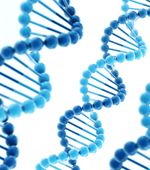Development of a Novel Therapeutic Agent for Breast Cancer Based on a New Pathway Analysis of Triple-Negative Breast Cancer
Development of a novel method for drug discovery using active compounds as pharmacodynamic biomarkers in triple-negative breast cancer cell lines.
Development of a novel method for drug discovery using active compounds as pharmacodynamic biomarkers in triple-negative breast cancer cell lines was described by Minoru Fujimori, MD, PhD, professor of breast surgery at the Tokyo Medical University Ibaraki Medical Center in Tokyo, Japan.

Lymph Node Stations Within the Thorax
Compounds that selectively inhibit proliferation of triple-negative breast cancer were screened in triple-negative breast cancer and control cell lines.
A small-molecule library was designed to seek structural diversity by chemical informatics and a total of 30,000 synthetic compounds were assessed considering drug similarities.
The differences in gene expression profiles in the cell lines before and after addition of the selected compounds were analyzed and compared with the control cells. Seven compounds that exhibited inhibitory effects (IC50-values ranging from 1.2 to 10.8 μM) on the triple-negative breast cancer cell lines were found in the compound library.
Microarray analysis indicated several pathways, including the irinotecan pathway that changed specifically in triple-negative breast cancer cell lines when these compounds were added.
“A research strategy to screen a compound library with structural diversity and develop a drug discovery system using active compounds as pharmacodynamic biomarkers can be widely applied as a new approach for developing innovative personalized medicine,” said Dr. Fujimori.